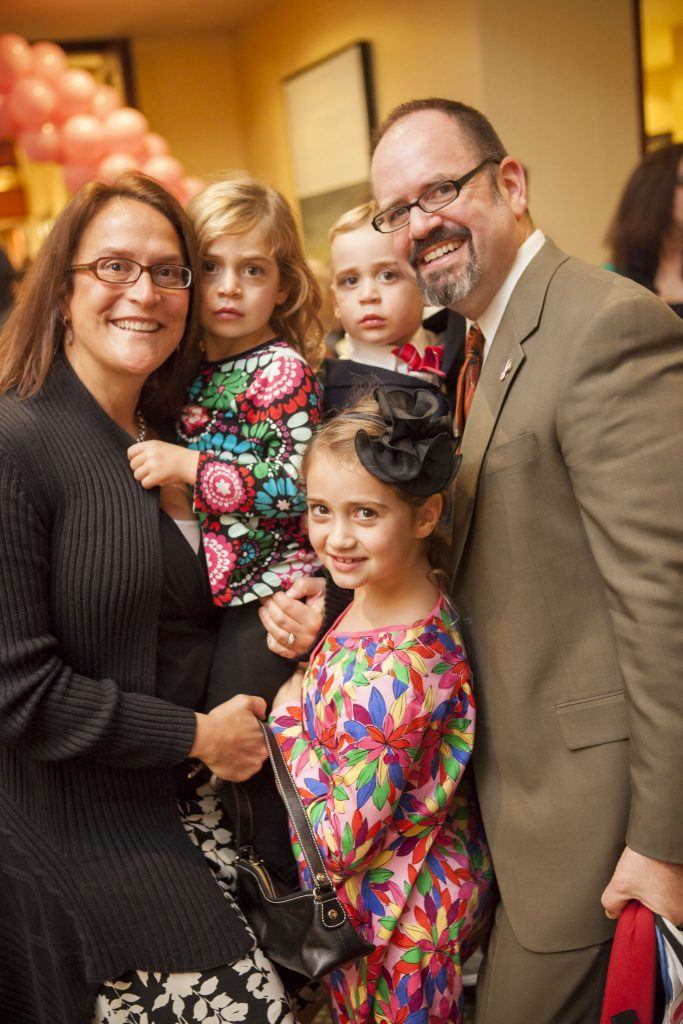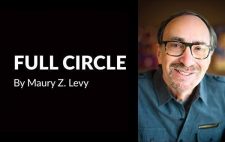As medical advances help more couples conceive children, this unchartered territory is presenting questions that are stumping many new parents, like Medford’s Athena Zuppa and Rob Somer. Their daughters, Anna, 7, and Leyna, 3, were conceived through in vitro fertilization (IVF) – where embryos are created in a Petri dish, frozen and then thawed when a couple wishes to have a baby. Today, the Somers are paying an annual fee to keep three remaining embryos frozen. They say their family is complete, but have no idea what to do next.
“We tried many methods over several years to get pregnant, but nothing was working.
It was very hard,” says Athena. “I was a pediatric critical care doctor, and Rob was training to be an oncologist. We were very type-A, very much in control of our lives and it was a horrible, horrible feeling.” After years of heartache, the couple tried IVF.
During IVF therapy, the woman is given fertility injections to stimulate her ovaries to make multiple eggs. “Over the course of about two weeks, the eggs grow. We extract the eggs and fertilize them with sperm in a Petri dish in an incubator in the lab. We let those fertilized eggs divide into embryos and then transfer them back into the uterus to hopefully achieve pregnancy,” says Stephen Sawin, MD, a partner in South Jersey Fertility Center. “In many cases, we freeze excess embryos for future use.”
 The Somers initially had seven embryos. Two were used for the first IVF cycle, which was successful; Anna was born on August 9, 2005. The remaining five embryos were frozen. Four years later the couple decided to have another child.
The Somers initially had seven embryos. Two were used for the first IVF cycle, which was successful; Anna was born on August 9, 2005. The remaining five embryos were frozen. Four years later the couple decided to have another child.
“We had to go into the freezer to retrieve more embryos,” says Rob. “Two came out and survived the thaw, and our daughter Leyna was conceived.” Four months after Leyna was born, the couple was surprised to learn Athena was pregnant with Eli, now 2.
Though research so far shows there are no adverse affects for children conceived from a frozen embryo, Athena admits she has concerns. “Your long-term outcomes are only as good as how long you’ve been doing it, and there aren’t any 90-year-olds walking around right now that were frozen embryos. The fear to me is whether or not there are defects in the DNA,” she says.
“Leyna loves sitting by the fire, and she always loves blankets. She is definitely colder than the other two. She also weighs much less than the other two. It’s not scientific at all but it goes through my head – is she predisposed to being cold because she was in the freezer so long? Part of it is that I’m an ICU doctor, and I see so many things. Is there a mutated cell in there somewhere? I think it’s the fear of the unknown.”
But Dr. Sawin says there’s no cause for alarm. “There’s nothing about her being frozen that would predispose her scientifically to being colder. There’s some evidence that IVF babies, fresh or frozen, may weigh less at birth than a naturally conceived pregnancy, but those babies catch up after a year of life to be the same as naturally conceived pregnancies.”
“It’s just a bunch of cells that are frozen,” adds Rob, “so we hope there aren’t any irregularities that could have existed during the defrost. Obviously it appears that hasn’t happened because she’s wonderful, but who knows what will happen when she’s 50 or 60.”
Dr. Sawin says he’s had patients who have successfully thawed embryos that had been frozen for 10 years. “Whether it’s a year or 10 years, it doesn’t seem to make a difference in terms of the ability of those embryos to create a pregnancy,” he explains. “Time literally stands still.”
Time is still on hold for three of the Somers’ embryos that are still frozen. Athena and Rob are certain they won’t want to have more children, so now they must decide what should be done with those remaining embryos.
“We still pay rent on them because I can’t destroy them, and I can’t let somebody else raise them. I don’t know if they’d be raised in a good home or a bad home,” says Athena. “It would break my heart to have my children out there and not know what was happening with them.”
Athena’s angst is typical for parents faced with this dilemma, but they do have options –though some are controversial.
Many parents, like the Somers, choose to pay rent to keep the embryos in cold storage, even though that can cost up to $1,000 a year.
Some parents donate their embryos to couples unable to conceive their own child. But because an embryo – which some consider to be a life – is being transferred, Rutgers Bioethics Professor Kimberly Mutcherson warns that can spark another set of issues. “If you are going to give those embryos to somebody else to use,” she says, “are you going to treat that like an adoption process and screen the people who are going to use your embryos?”
Frozen embryos can also be donated to medical research, says Mutcherson, who teaches the course Bioethics, Babies and Babymaking. “For some people, the ability to turn over those embryos for stem cell and other research is a valuable and valued purpose. They aren’t being turned into babies, but they are being used for things like trying to figure out cures for chronic and debilitating diseases. That is something a lot of people can feel really good about. But if you’re on the other side of that and think every embryo is a tiny person who deserves all the love and care that any person should have access to, then the idea of sending them off for people to do research on them, which ultimately ends in their destruction, is going to feel ethically troubling and probably morally wrong.”
A more controversial option is to use the frozen embryos to produce what is has been dubbed “savior siblings.” “You have a child who has some sort of illness for which a donor is needed, and the parents will use technology to create a perfect donor for their child,” Mutcherson explains. “In rare circumstances, having those embryos waiting in the wings could ultimately be used. People raise questions about whether that’s an appropriate use of embryos, or whether that’s a good reason to have a baby.”
“Some of the discussion,” adds Rob, “is that if, God forbid, a family member gets ill and requires certain medical therapies at a time when technology is more advanced, we may be able to use those few cells that are frozen to provide donor stem cell transplant or something like that. You really don’t know what the technology is going to bring and keeping them frozen at this point makes sense.”
Maintaining frozen embryos may also cause new dilemmas should the parents decide to split up. “People don’t think about what happens if the two people who made the embryos aren’t together anymore,” Mutcherson says. “Courts have been very reluctant to allow people to use embryos over the objection of the other person who helped make the embryos. Mostly courts, generally, have said the person who doesn’t want them to be used should win. The only cases where that person should lose are cases where, for the person who wants to use them, it’s their only opportunity to become a parent.”
For now, the Somers are keeping their extra embryos in cold storage. “You have your children, you count your blessings and you want to move on,” says Athena. “I feel like I’m never going to be free of it. I know what these embryos can produce – they produced Anna and Leyna. If they were eggs as opposed to embryos, I would let them go.”














